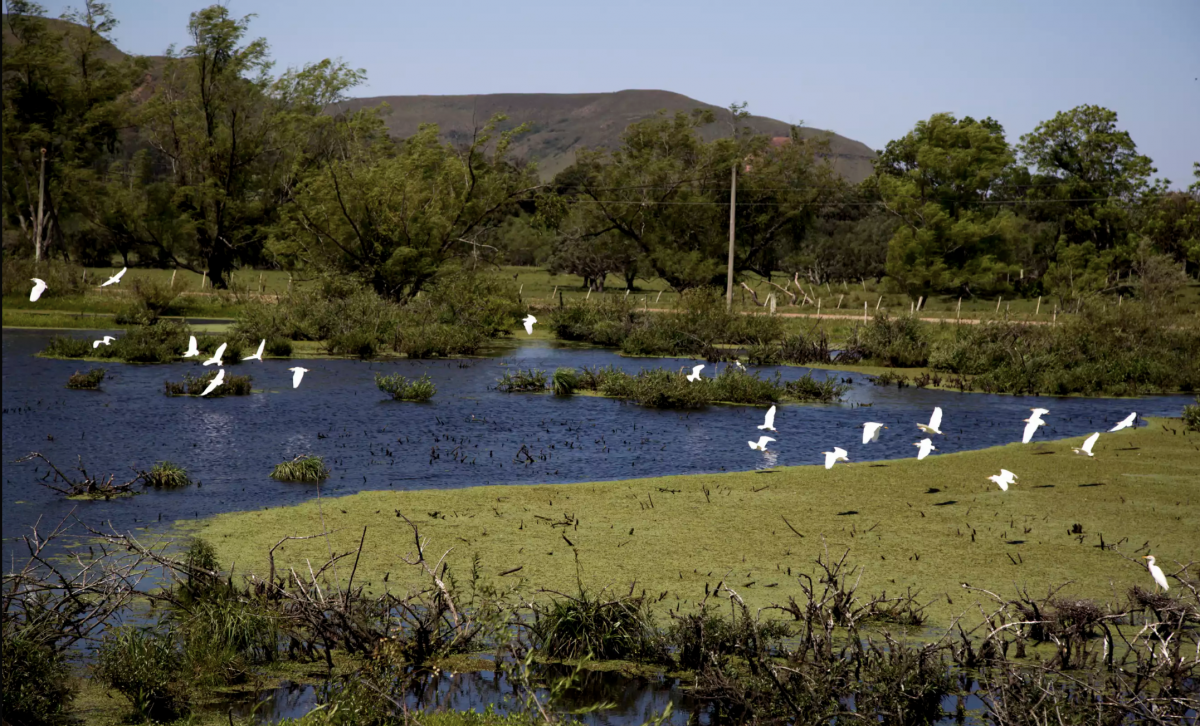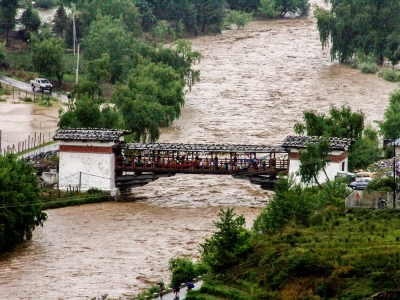Supporting Uruguay to advance their NAP process
Project Overview
Sep 2015
Uruguay submits their Intended Nationally Determined Contributions (INDCs) to the UNFCCC
Apr 2016
Consultations and workshops for developing the National Climate Change Policy run through to November and identify urban areas as priorities for adaptation measures
Oct 2016
NAP-GSP undertakes a mission to Uruguay to take stock of adaptation policies and suggest next steps for the country’s NAP process
Oct 2016
Stakeholders meet to begin planning a Readiness proposal to submit to the Green Climate Fund (GCF) for potential funding to support the NAP process
Oct 2016
Uruguay ratifies the Paris Agreement
Feb 2017
The Readiness and Preparatory Support Proposal is submitted to the GCF
Apr 2017
Adoption of the National Climate Change Policy by the National Environment Cabinet.
Nov 2017
Uruguay submits their First Nationally Determined Contributions (NDC)
Country background, Sustainable Development Goals and Paris Agreement
Uruguay is situated in the south-east of South America, where the seasons are well-defined. The country has an export-oriented agricultural sector, and its services sector has shown significant growth since 2004 after it took a plunge as a result of the 2002 economic crisis. As of 2017, services contribute to around 61.25 percent of total economic outputs. In 2018 Uruguay was ranked 55th out of 189 countries in the Human Development Index (HDI), standing out in the Latin American region as a country with low levels of inequality, high per capita income and almost non-existent extreme poverty in recent years.
However, climate change poses a major threat to Uruguay and its adverse impacts are projected to intensify in the future. In 2008, the costs of drought to the agricultural sector were equivalent to 2.9 percent of GDP and in early 2014, rains that ranged between 150 and 350 percent of the monthly median caused extreme flooding and left 20,000 people in urban areas displaced. Temperatures are predicted to increase by 2-3°C by 2100, causing more frequent and intense incidences of drought, floods, heat waves, hail, storms, and tornados.
Over the years, the Government of Uruguay has developed institutional frameworks to address climate change. In 2009, it set up the National System for Response to Climate Change and Variability (SNRCC) which was evaluated in 2014 (Spanish). Furthermore, in April 2017, it adopted the PNCC, its National Climate Change Policy which advances the integration of climate change into public policies at national and local levels. It also provides a mechanism for formulating and adopting the country’s First Nationally Determined Contribution (NDC) to the UNFCCC. Taking a proactive stance towards climate change with a national plan that stretches to 2050, Uruguay is giving necessary attention to adaptation measures, as well as mitigation. It is developing a NAP for agriculture as well as for its coasts and cities. The NAP-Cities initiative aims at mainstreaming adaptation into urban areas throughout the country and is being supported by domestic and international financing sources. This holistic approach to tackling climate change is complementary to its development objectives and conducive to achieving the Sustainable Development Goals.
How has the NAP-GSP supported to date?
|
A meeting was organised to develop a work plan for a Readiness proposal to be submitted to the Green Climate Fund (GCF)
|
A NAP-GSP mission was deployed to Uruguay from 14-23 October 2016, to support a NAP workshop. The workshop convened various stakeholders from central agencies, local governments, academic institutions and NGOs to develop a road map and a logical framework for a Readiness proposal to outline a NAP project to the GCF for potential funding.
|
|
Helped build capacity and facilitated access to additional climate finance
|
Uruguay submitted their Readiness and Preparatory Support Proposal to the Green Climate Fund (GCF) in February 2017. The GCF approved the proposal and the project - Integrating adaptation into cities, infrastructure and local planning in Uruguay – began being implemented in May 2018.
|
|
Worked to integrate climate change adaptation considerations into coastal planning in Uruguay
|
With funding from the Global Environment Facility, the “Implementation of Climate Change Adaptation measures in Coastal Areas of Uruguay” project is being undertaken by UNDP, the NAP-GSP and the National Directorate of the Environment (DINAMA) of Uruguay. Three percent of Uruguay’s total territory is comprised of wetlands and protecting them is essential for sustaining the ecosystem services they provide – from economic gains of tourism, to climate change benefits of carbon sequestration as well as acting as natural barriers to rising water levels.
|
Project Details
Level of intervention:
Key collaborators:
Project status:
Completed
Funding source:
News
May 2018, Uruguay - With UNDP support and GCF finance, Uruguay works toward sustainable cities, increasing integration, adaptation, and resilience to climate change
Country Initiatives
Reports and Publications
Case Study
Case study: Making the case for gender-responsive adaptation planning in Uruguay: The importance of sex-disaggregated data
Submitted by melanie.pisano@... on 02 October 2019
Project Brief / Fact Sheet
National Adaptation Plan process in focus: Lessons from Uruguay
Submitted by esther.lake@undp.org on 13 November 2017

 Assessing climate risks and vulnerabilities is essential for adapting to climate change
Assessing climate risks and vulnerabilities is essential for adapting to climate change 